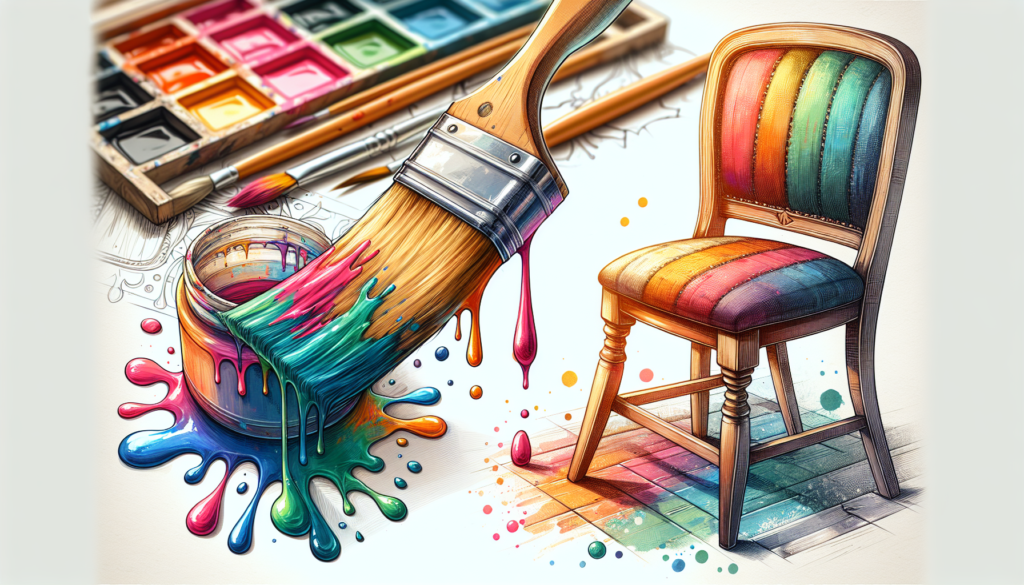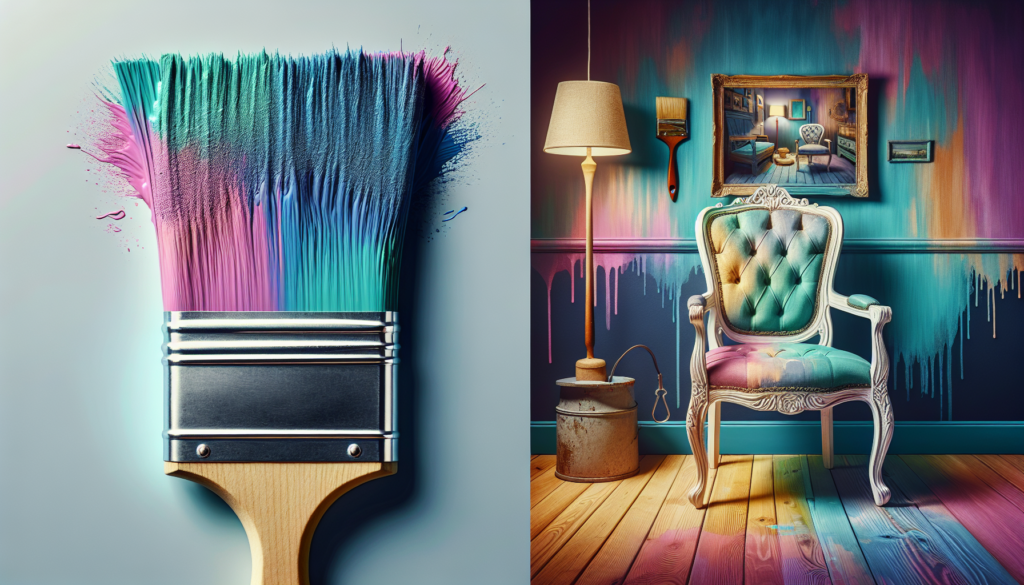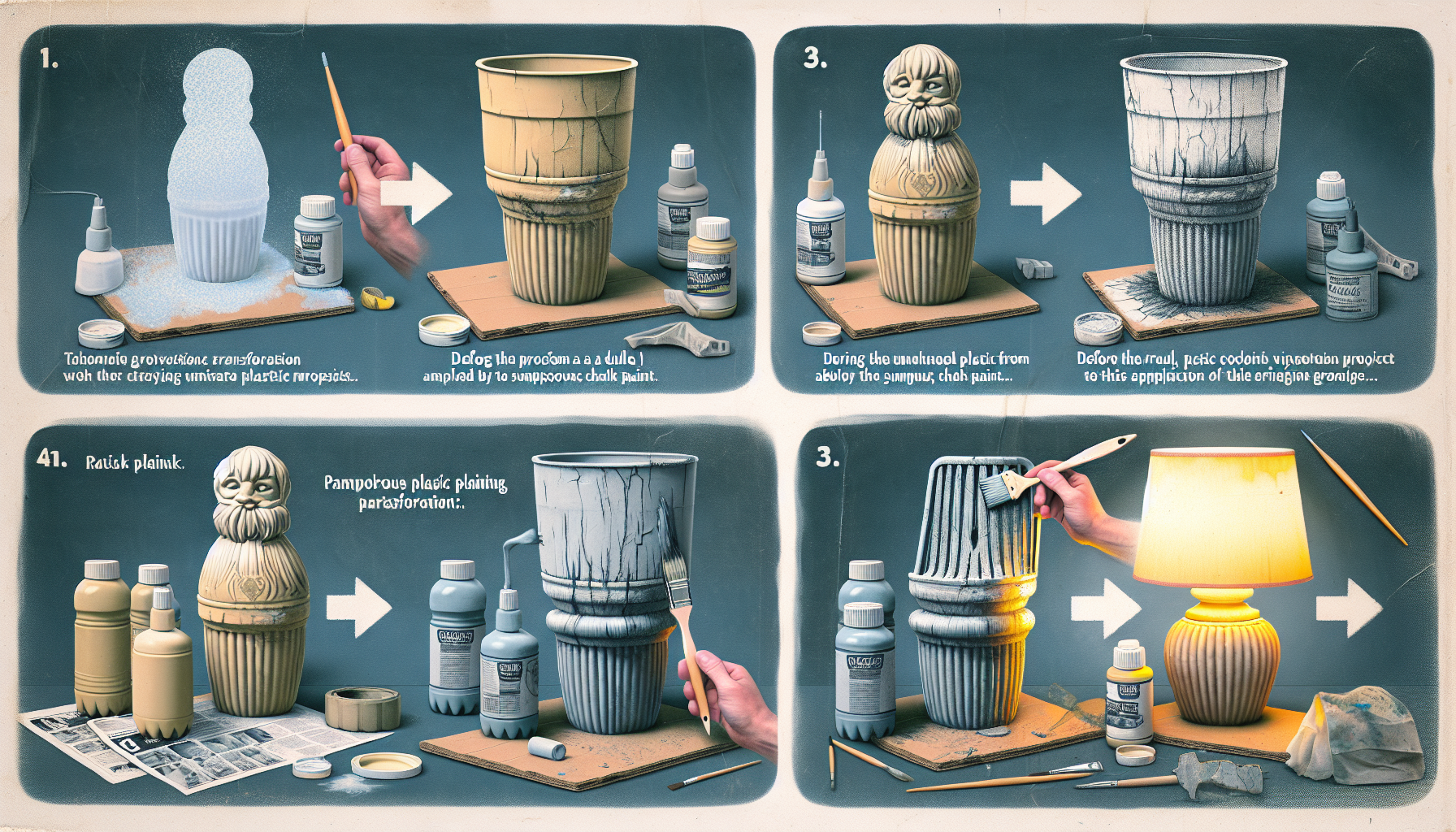Chalk paint, a popular choice among DIY enthusiasts for its matte, vintage finish, has gained quite a following over the years. However, there is one question that often lingers in the minds of those contemplating a chalk paint project: does chalk paint need primer? This article will explore the necessity of using a primer before applying chalk paint, shedding light on the potential benefits and pitfalls of skipping this crucial step. Whether you are a seasoned chalk paint aficionado or a curious beginner, this article will provide you with the expert advice you need to achieve flawless results in your DIY endeavors.

What is Chalk Paint?
Chalk paint is a type of paint that has a matte, velvety finish and is commonly used in furniture and home decor projects. It was developed by Annie Sloan in the early 1990s and has gained popularity for its ease of use and ability to transform outdated or worn-out items.
Definition
Chalk paint is a water-based paint that contains chalk and other minerals, giving it a unique texture and appearance. It is known for its thick consistency and excellent coverage, making it ideal for covering imperfections and creating a smooth, rustic finish.
Characteristics
One of the key characteristics of chalk paint is its matte finish, which provides a vintage or shabby chic look to furniture and other surfaces. It has a quick drying time and is easily distressable, allowing for the creation of a worn, aged appearance. Chalk paint is available in a wide range of colors and can be easily mixed and blended to achieve custom shades.
Popular Uses
Chalk paint can be used on various surfaces, including wood, metal, plastic, and even fabric. It is commonly used to transform old furniture pieces, such as tables, chairs, cabinets, and dressers. Additionally, chalk paint is often used to create decorative finishes, such as stenciling, color washing, and layering techniques.
Understanding Primers
Before delving into the need for primer when using chalk paint, it is important to understand what primers are and their purpose in the painting process.
Definition
Primers are preparatory coatings that are applied to surfaces before painting. They provide a smooth, uniform base for paint to adhere to and improve the overall durability and longevity of the paint job. Primers help to seal the surface, prevent stains and bleed-through, and enhance the adhesion of the paint.
Types of Primers
There are different types of primers available, each designed for specific surfaces and conditions. Common types of primers include water-based primers, oil-based primers, shellac-based primers, and stain-blocking primers. The choice of primer depends on the type of surface being painted and the desired finish.
Purpose of Priming
The primary purpose of priming is to ensure proper adhesion between the paint and the surface. Without a primer, the paint may not adhere well to certain surfaces, resulting in poor coverage, uneven color, and decreased durability. Priming also helps to block stains, seal porous surfaces, and minimize the number of paint coats required.
Benefits of Using Primer with Chalk Paint
While chalk paint is known for its excellent coverage and adhesion, using a primer can further enhance its performance and benefits. Here are some of the key benefits of using a primer with chalk paint:
Improved Adhesion
Applying a primer before using chalk paint improves the adhesion of the paint to the surface, ensuring better coverage and longevity. Primers create a strong bond between the paint and the surface, preventing peeling, chipping, and flaking over time.
Preventing Stains
Certain surfaces may have stains or discolorations that can bleed through the paint. Using a primer acts as a barrier, preventing these stains from seeping through and affecting the final paint finish. This is particularly important when painting over materials like wood that may have tannins or other substances that can cause discoloration.
Reduced Number of Coats
When using a primer with chalk paint, you can often achieve full coverage and desired color with fewer coats of paint. This not only saves time and effort but also reduces the amount of paint required for a project. Priming helps to create an even base, minimizing the need for multiple coats of paint to achieve the desired finish.
Enhanced Durability
By using a primer, the paint has a stronger foundation to adhere to. This increases the overall durability of the painted surface and improves its resistance to everyday wear and tear. A well-primed surface is less likely to chip, scratch, or peel, ensuring a longer-lasting and more professional-looking finish.
Factors Affecting the Need for Primer
While using a primer with chalk paint can provide numerous benefits, there are several factors to consider when determining whether primer is necessary for a particular project. The following factors can influence the need for primer:
Type of Surface
The type of surface being painted plays a significant role in whether or not a primer is necessary. Surfaces like wood, metal, and plastic may require a primer to ensure proper adhesion and enhance the durability of the paint job. Porous surfaces, such as raw wood or unfinished plaster, typically benefit from priming to seal the surface and prevent the paint from soaking in.
Condition of Surface
The condition of the surface being painted also impacts the need for primer. If the surface is smooth, in good condition, and free of stains or imperfections, a primer may not be necessary. However, if the surface is uneven, damaged, or has stains or discolorations, using a primer can help create a smooth and uniform base for the paint.
Desired Finish
The desired finish also plays a role in determining the need for primer. If you intend to create a distressed or shabby chic look with the chalk paint, priming may not be necessary. However, if you want a smooth and consistent color with excellent coverage, priming the surface can help achieve the desired finish.
Chalk Paint Brand
Different brands of chalk paint may have varying adhesion properties and coverage capabilities. Some brands may require a primer for optimal performance, while others may offer built-in primer qualities that eliminate the need for an additional coat. It is essential to read the manufacturer’s recommendations and instructions for each specific brand of chalk paint to determine if a primer is needed.

Situations Where Primer is Not Required
While priming is generally recommended for chalk paint, there are certain situations where it may not be necessary. These include:
Previously Painted Surface
If the surface being painted has already been painted with chalk paint or another type of paint, a primer may not be required. As long as the existing paint is in good condition and properly adhered, you can proceed with applying a new coat of chalk paint directly onto the surface.
Chalkboard Surfaces
When painting chalkboard surfaces, which are typically coated with a specific type of paint that allows for writing with chalk, a primer is generally not needed. Chalkboard paint has excellent adhesion properties and is designed to be written on and erased repeatedly without the need for a primer.
Earthy Natural Wood Look
If you desire to maintain the natural look of wood and achieve an earthy, rustic appearance, using a primer may not be necessary. Chalk paint can be applied directly onto unfinished or raw wood to achieve a weathered, aged look without the need for a primer.
Distressed/Shabby Chic Look
When aiming for a distressed or shabby chic finish, priming may not be necessary. The purpose of this style is to create a worn and vintage appearance, often achieved by lightly sanding or using techniques like dry brushing and distressing. Adding a primer may interfere with the desired outcome and unnecessary for this type of finish.
When Primer is Recommended for Chalk Paint
While there are situations where primer may not be needed when using chalk paint, there are specific scenarios where the use of primer is highly recommended. These include:
Glossy or Smooth Surfaces
If you are painting a glossy or smooth surface, such as laminate or glass, using a primer is crucial. Glossy surfaces tend to have poor adhesion properties, making it difficult for chalk paint to adhere properly. A primer will help create a surface that the chalk paint can easily grip onto, ensuring a more durable and long-lasting finish.
Uneven or Damaged Surfaces
Surfaces that are uneven, damaged, or have imperfections may benefit from a primer. Priming such surfaces can help create a smoother and more uniform base, filling in gaps and imperfections, allowing for a more flawless application of chalk paint.
Stained or Tannin-Rich Surfaces
Stained surfaces or surfaces with high tannin content, such as knotty pine or oak, can cause discoloration and bleed-through if not properly sealed. Using a stain-blocking primer before applying chalk paint can help prevent these stains from showing through and affecting the final paint finish.
Laminate or Veneer Surfaces
Laminate and veneer surfaces often have a smooth and non-porous finish, making it challenging for chalk paint to adhere properly. Priming these surfaces will create a surface that the chalk paint can grip onto, preventing peeling and ensuring a more professional-looking result.
Choosing the Right Primer for Chalk Paint
When selecting a primer to use with chalk paint, it is essential to consider the specific needs of your project. Different types of primers have different properties and are suitable for different surface types. Here are some common types of primers used with chalk paint:
Water-Based Primers
Water-based primers are a popular choice for chalk paint projects due to their low odor, easy cleanup, and compatibility with water-based paint. They provide excellent adhesion and can be used on a wide range of surfaces, including wood, metal, and plastics. Water-based primers dry quickly and are less likely to cause yellowing in the paint over time.
Oil-Based Primers
Oil-based primers are known for their superior adhesion and stain-blocking properties. They are highly effective in sealing porous surfaces and preventing stains from bleeding through the paint. Oil-based primers are well-suited for difficult surfaces, such as laminate or veneer, and provide excellent durability for long-lasting finishes. However, they have a strong odor and require mineral spirits for cleanup.
Shellac-Based Primers
Shellac-based primers, also known as shellac sealers, are derived from natural shellac resin and dissolved in alcohol. They are highly effective in sealing and blocking stains, including those caused by water, smoke, or tannins. Shellac-based primers dry quickly, are compatible with most types of paint, and provide excellent adhesion. However, they have a strong odor and should be used in well-ventilated areas.
Stain-Blocking Primers
Stain-blocking primers are specifically formulated to prevent stains and discoloration from seeping through the paint. These primers are excellent for surfaces prone to stains, such as water damage, smoke damage, or heavy-duty kitchen and bathroom areas. Stain-blocking primers are available in water-based and oil-based formulations and provide a reliable solution for achieving a consistent paint finish.
Tips and Techniques for Priming with Chalk Paint
To ensure successful priming with chalk paint, it is important to follow proper techniques and guidelines. Here are some tips to consider when priming with chalk paint:
Preparing the Surface
Before priming, ensure that the surface is clean, dry, and free from dust, dirt, grease, or any other contaminants. Use a mild detergent and water to clean the surface thoroughly and allow it to dry completely before applying the primer.
Applying the Primer
Apply the primer evenly and in thin coats using a paintbrush, roller, or sprayer, depending on the size and type of surface. Follow the manufacturer’s instructions for drying time between coats.
Drying and Curing Time
Allow the primer to dry and cure fully according to the manufacturer’s instructions before applying chalk paint. Drying time may vary depending on the type of primer used, the temperature, and humidity conditions.
Sanding and Smoothing
Once the primer is dry, lightly sand the surface to ensure it is smooth and free from any imperfections. Use a fine-grit sandpaper or sanding block for this process. Remove any dust or debris before applying chalk paint.
Alternative Products to Primer
While priming is generally recommended for optimal results when using chalk paint, there are alternative products available that can serve similar purposes. These include:
Chalk Paint with Built-In Primer
Some brands of chalk paint offer formulations that include built-in priming qualities. These paints are designed to adhere well to a variety of surfaces without the need for a separate primer. They provide good coverage, adhesion, and durability, making them a convenient option for those who prefer a simplified painting process.
Sealers and Bonding Agents
Sealers and bonding agents are products that can be used in conjunction with chalk paint to improve adhesion and seal porous surfaces. These products are applied before or after the paint and provide extra protection and durability, particularly in high-traffic areas or for outdoor projects.
Paint and Primer in One
Paint and primer in one products have become increasingly popular in recent years. These paints combine the properties of both paint and primer, offering improved adhesion and coverage. While they may be suitable for certain surfaces, it is important to read the manufacturer’s instructions and recommendations, as they may not perform as effectively as using a separate primer.
Deglossers and Etching Solutions
Deglossers and etching solutions can be used to remove gloss or shine from surfaces that have a smooth or glossy finish. These products create a slightly textured surface that improves the adhesion of chalk paint. They are particularly useful for painting laminate, glass, or metal surfaces that are difficult to prime.
Conclusion
In conclusion, using a primer with chalk paint can provide numerous benefits, including improved adhesion, stain prevention, reduced number of coats, and enhanced durability. The need for primer depends on various factors, such as the type and condition of the surface, desired finish, and the brand of chalk paint being used. While there are situations where primer may not be necessary, it is generally recommended for glossy or smooth surfaces, uneven or damaged surfaces, stained or tannin-rich surfaces, and laminate or veneer surfaces.
When choosing a primer for chalk paint, consider the specific needs of your project and select a primer that is compatible with the surface type and desired finish. Proper surface preparation, application techniques, and drying time are crucial for successful priming with chalk paint.
While priming is the recommended approach, there are alternative products available, such as chalk paint with built-in primer, sealers and bonding agents, paint and primer in one, and deglossers and etching solutions. These products can provide similar benefits and may be suitable for specific projects or preferences.
In summary, thorough understanding of the factors affecting the need for primer, knowledge of the various types of primers, and proper application techniques are essential for achieving a successful chalk paint project. By following the guidelines for primer usage and considering the specific requirements of your painting project, you can achieve a professional and long-lasting finish with chalk paint.



